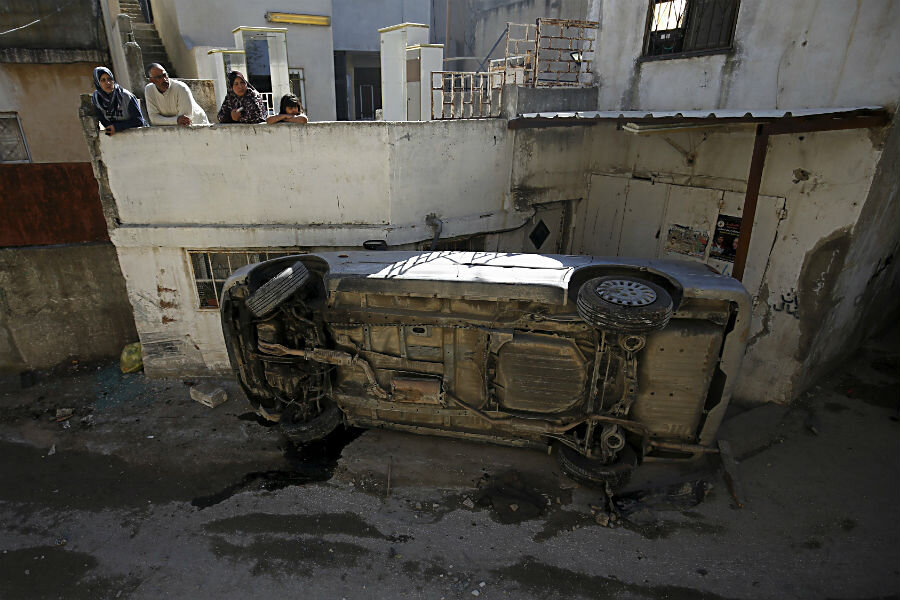How did a GPS error lead to a deadly Israeli-Palestinian firefight?
Loading...
Two Israeli soldiers who took a wrong turn thanks to directions from a smartphone application caused a clash between their forces and Palestinians Monday after they entered a West Bank settlement unannounced.
One Palestinian died and 10 were injured after Israeli troops arrived at the Qalandiya refugee camp, located between Jerusalem and Ramallah, to find the two soldiers. Several Israeli soldiers were hurt in the fight as well, according to The Washington Post.
The lost soldiers, reportedly from a noncombat unit, had been using the Waze app to navigate. Waze is a community-driven GPS-based app that takes in user information in real time to update its maps with route suggestions and points of interest. Waze, originally called FreeMap Israel, was first developed and utilized as a mapping tool for Israel before it was bought by Google in 2013.
Agence France-Presse (AFP) quoted Waze as saying that a so-called safe mode setting in the app – which allows for navigation around places that are “dangerous or prohibited for Israelis to drive through” – was turned off on the soldiers’ device.
“In this case, the setting was disabled. In addition, the driver deviated from the suggested route and, as a result, entered the prohibited area,” Waze told AFP.
After mistakenly arriving in Qalandiya, the two troops were “stormed by a mob of people with rocks and molotov cocktails,” according to Israel Defense Forces (IDF) spokesman Lt. Col. Peter Lerner. Their car was blocked from moving away and set on fire, and the soldiers became separated.
That initial encounter prompted the Israeli rescue mission, during which Israeli forces initiated the controversial Hannibal Protocol the IDF has employed in the event that soldiers are captured. While neither of the two disoriented Israelis ended up in Palestinian custody, the troops’ use of the Hannibal directive allowed them to “carry out an extraction as fast as possible in order to end the incident” by bringing in reinforcements and raising the alert level around Qalandiya, says Lt. Col. Lerner.
One soldier carrying a mobile device was quickly located, while the second was found around an hour later near an Israeli settlement, the Post reported.
Palestinian Qalandiya’s Iyad Omar Sajadiyya, 22, was the lone fatality resulting from the operation. Mr. Sajadiyya was a journalism student at al-Quds University, and was shot in the head during the fighting. Around 10 residents of Qalandiya have been shot by Israeli forces since last fall, according to the Palestinian news agency Ma’an.
IDF Gen. Gadi Shamni, who used to operate in the Qalandiya area, told Israel Radio that the refugee camp had become a “no man’s land,” according to the Post, under control by neither Palestinians nor Israelis.
“This vacuum attracts violent gangs and a lot of armed people,” he said. “There are incidents of shooting almost every evening in Qalandiya, certainly when the [Israeli military] enters.”
This incident is not the first time Israelis using Waze have misstepped into a Palestinian zone. Last June, two Israeli soldiers driving to a meeting at a military base accidentally turned into a West Bank town. In that case, the two were removed from the area by Palestinian authorities, according to The Times of Israel.
“I have learned a long time ago that despite GPS, we must not forget navigation by map,” Israeli Minister of Defense Moshe Ya'alon told The New York Times.








